Bimatoprost for the treatment of eyelash, eyebrow and scalp alopecia
March 2017
in “Expert Opinion on Investigational Drugs”
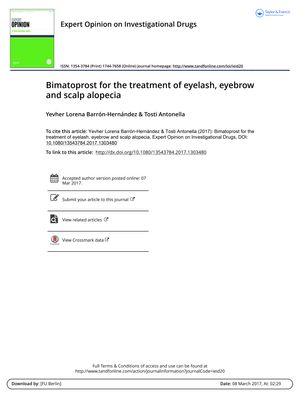
TLDR Bimatoprost is promising for treating some types of hair loss but needs more testing for androgenetic alopecia.
The document from 2017 reviews the use of bimatoprost, a synthetic prostamide F2α analog, for treating various forms of alopecia, including eyelash, eyebrow, and scalp alopecia. It highlights the drug's FDA approval for increasing eyelash growth and discusses its potential as a treatment for idiopathic and chemotherapy-induced eyelash hypotrichosis, alopecia areata of the eyelashes and eyebrows, and androgenetic alopecia. Clinical trials have shown bimatoprost to be effective in improving eyelash length, thickness, and darkness, with a study of 36 patients demonstrating 88.9% showing improvement compared to 27.8% in the vehicle group. However, its effectiveness in adolescents with chemotherapy-induced eyelash hypotrichosis or alopecia areata was not observed. A retrospective study of 41 patients with alopecia areata universalis showed significant eyelash growth in 43.24% of patients after one year. For eyebrow hypotrichosis, studies reported significant improvements, with one larger study of 357 subjects showing a higher proportion with improved eyebrow appearance after 7 months. The efficacy on scalp alopecia areata is mixed, and preliminary results suggest bimatoprost is less effective than minoxidil for androgenetic alopecia. Bimatoprost is generally safe and well-tolerated, with mild and localized adverse events. The document concludes that while bimatoprost is promising for certain alopecia types, phase III trials are needed to confirm its efficacy and safety for androgenetic alopecia treatment.
View this study on tandfonline.com →
Cited in this study
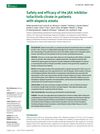
research Safety and efficacy of the JAK inhibitor tofacitinib citrate in patients with alopecia areata
Tofacitinib is safe and effective for severe alopecia areata, but hair loss may return 2 months after stopping treatment.

research Oral ruxolitinib induces hair regrowth in patients with moderate-to-severe alopecia areata
Ruxolitinib effectively regrows hair in most patients with severe hair loss.
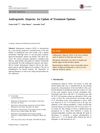
research Androgenetic Alopecia: An Update Of Treatment Options
Minoxidil is the only FDA-approved topical drug for treating male or female pattern hair loss, and other medications like finasteride and dutasteride can also increase hair growth.
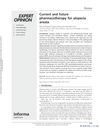
research Current and future pharmacotherapy for alopecia areata
New treatments for hair loss show promise but need more research to confirm safety and effectiveness.
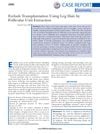
research Eyelash Transplantation Using Leg Hair by Follicular Unit Extraction
Leg hair can be used for eyelash transplants, resulting in fuller lashes with less maintenance.
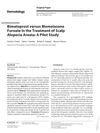
research Bimatoprost versus Mometasone Furoate in the Treatment of Scalp Alopecia Areata: A Pilot Study
Bimatoprost was found to be safer and more effective than mometasone furoate for treating scalp hair loss.
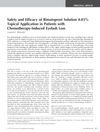
research Safety and Efficacy of Bimatoprost Solution 0.03% Topical Application in Patients with Chemotherapy-Induced Eyelash Loss
Bimatoprost is safe and effective for treating eyelash loss caused by chemotherapy.

research Guidelines for management of androgenetic alopecia based on BASP classification-the Asian consensus committee guideline
Use 5% minoxidil or oral finasteride for mild-to-moderate hair loss, combine with hair transplant for severe cases.
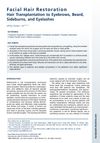
research Facial Hair Restoration
Facial hair restoration is generally successful and satisfying for patients when done with quality techniques and realistic expectations.
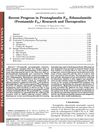
research Recent Progress in Prostaglandin F2αEthanolamide (Prostamide F2α) Research and Therapeutics
New research on prostamide F2α has led to treatments for glaucoma and eyelash growth and may have more medical uses.
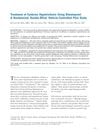
research Treatment of Eyebrow Hypotrichosis Using Bimatoprost: A Randomized, Double-Blind, Vehicle-Controlled Pilot Study
Bimatoprost effectively and safely improves eyebrow appearance.

research British Association of Dermatologists’ guidelines for the management of alopecia areata 2012
Guidelines suggest various treatments for alopecia areata, but leaving it untreated is also an option as 80% cases may recover on their own.

research A randomized double-blind placebo-controlled pilot study to assess the efficacy of a 24-week topical treatment by latanoprost 0.1% on hair growth and pigmentation in healthy volunteers with androgenetic alopecia
Latanoprost 0.1% may effectively treat hair loss.
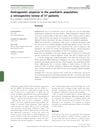
research Androgenetic alopecia in the paediatric population: a retrospective review of 57 patients
Alopecia common in teens, may indicate endocrine issue, minoxidil effective treatment.
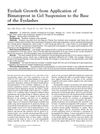
research Eyelash Growth from Application of Bimatoprost in Gel Suspension to the Base of the Eyelashes
Bimatoprost gel makes eyelashes grow longer, but may cause side effects and should be monitored by an eye doctor.
research Bimatoprost in the treatment of eyelash hypotrichosis
Bimatoprost is effective for growing longer, thicker, and darker eyelashes.

research Prevalence of androgenetic alopecia in China: a community-based study in six cities
Baldness is more common in Chinese men than women, increasing with age, and is influenced by genetics.
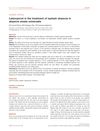
research Latanoprost in the treatment of eyelash alopecia in alopecia areata universalis
Latanoprost can effectively treat eyelash hair loss, with 45% of patients showing hair regrowth and no reported side effects.
research Characterization of anin vivomodel for the study of eyelash biology and trichomegaly: mouse eyelash morphology, development, growth cycle, and anagen prolongation by bimatoprost
The study showed that mouse eyelashes can be used to study eyelash growth and that bimatoprost makes them longer and more numerous.
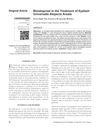
research Bimatoprost in the treatment of eyelash universalis alopecia areata
Bimatoprost helped eyelash growth in nearly half of the patients with a type of eyelash hair loss.
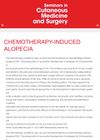
research Chemotherapy-Induced Alopecia
Scalp cooling might reduce hair loss from chemotherapy, but evidence is weak and other treatments are being tested.
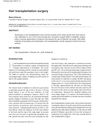
research Hair transplantation surgery
Hair transplantation surgery has improved, giving more natural results, and success depends on a skilled team and proper technique.

research Fortnightly review: Male pattern androgenetic alopecia
Hair loss in men is common, treatable, but not curable.
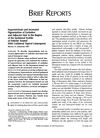
research Hypertrichosis and Increased Pigmentation of Eyelashes and Adjacent Hair in the Region of the Ipsilateral Eyelids of Patients Treated with Unilateral Topical Latanoprost
Using the eye pressure medication latanoprost can cause excessive hair growth and darker eyelashes on the treated eye.

research A randomized trial of minoxidil in chemotherapy-induced alopecia
Minoxidil shortens baldness from chemotherapy by 50.2 days without significant side effects.

research Topical minoxidil solution (1% and 5%) in the treatment of alopecia areata
Minoxidil solution helps hair regrowth in alopecia areata, with 5% being more effective.

research Double-blind, placebo-controlled evaluation of topical minoxidil in extensive alopecia areata
Minoxidil helps hair growth in 63.6% of alopecia patients, with 27.3% having excellent results.
Related

research Bimatoprost for the treatment of eyelash, eyebrow and scalp alopecia
Bimatoprost is promising for treating some types of hair loss but needs more testing for androgenetic alopecia.
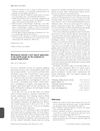
research Bimatoprost solution 0·03% topical application to the eyelid margin for the treatment of eyelash hypotrichosis
Bimatoprost solution 0.03% is effective for treating sparse eyelashes.
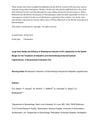
research Long‐term safety and efficacy of bimatoprost solution 0·03% application to the eyelid margin for the treatment of idiopathic and chemotherapy‐induced eyelash hypotrichosis: a randomized controlled trial
Bimatoprost solution is effective and safe for long-term use in treating eyelash thinning.
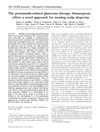
research The prostamide‐related glaucoma therapy, bimatoprost, offers a novel approach for treating scalp alopecias
Bimatoprost, a glaucoma medication, may also help treat hair loss.
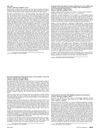
research Long-term safety and efficacy of Latisse (bimatoprost 0.03% solution) for treatment of eyelash hypotrichosis in subjects with chemotherapy induced and idiopathic hypotrichosis
Latisse is safe and effective for long-term eyelash growth in people with thin eyelashes from chemotherapy or unknown causes.
research Topical bimatoprost for the treatment of eyebrow hypotrichosis.
Bimatoprost can help grow eyebrow hair.
research Bimatoprost in the treatment of eyelash hypotrichosis
Bimatoprost is effective for growing longer, thicker, and darker eyelashes.